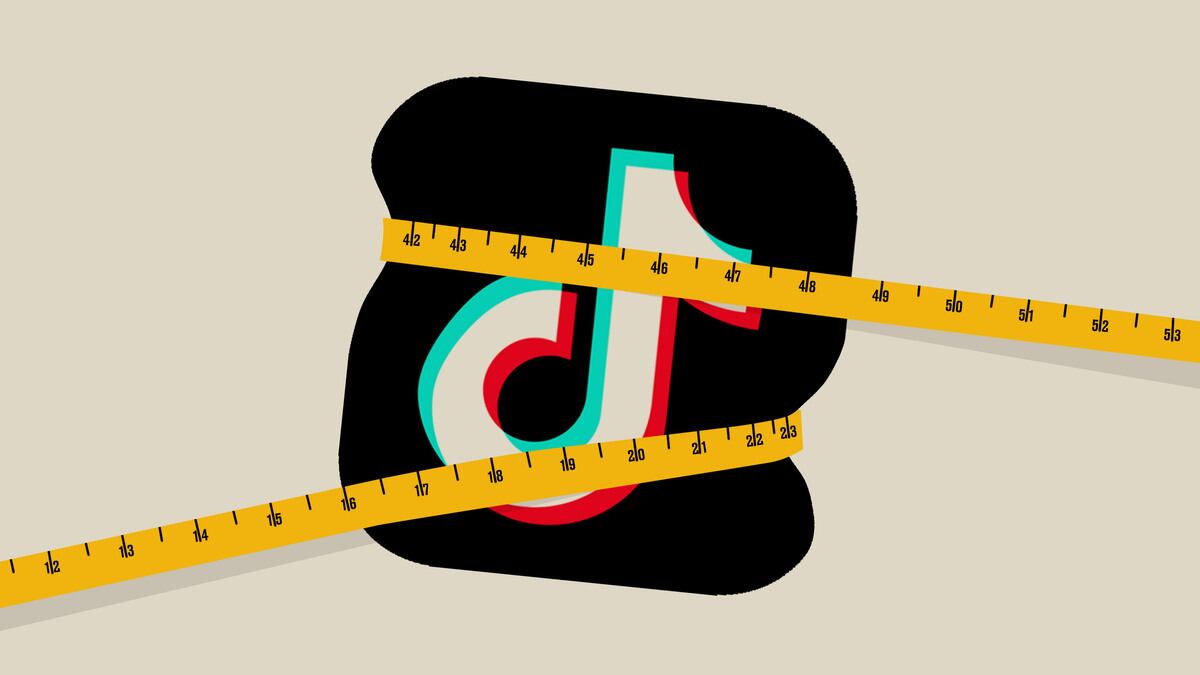TikTok is failing to protect young users from dangerous content promoting eating disorders, according to a new report, despite being warned by researchers that the posts were receiving millions of views.
Late last year, a group of researchers at the Center For Countering Digital Hate (CCDH) warned TikTok they had found harmful pro-eating disorder content hidden under coded hashtags on the site—some of which had millions of views. Now, they say the company failed to remove the vast majority of the content.
“Every view represents a potential victim—someone whose mental health might be harmed by negative body image content, someone who might start restricting their diet to dangerously low levels,” said Imran Ahmed, CEO of the CCDH, in a statement. “The stakes are too high for TikTok to continue to do nothing, or for our politicians to sit back and fail to act.”
The call for change comes during Eating Disorders Awareness Week. On Tuesday, President Joe Biden issued a presidential proclamation on the “devastating effects” eating disorders can have, and called out “the harms of bullying and social media platforms that fuel eating disorders, depression, and self-harm.”
In November 2022, researchers at the CCDH created two TikTok accounts posing as 13-year-old girls and recorded the first 30 minutes of videos the app suggested. Within eight minutes, one of the accounts was served eating disorder content via TikTok’s “For You Page,” which uses an algorithm to display videos to users. The researchers also found the accounts were shown videos about self-harm, body-image, mental health and suicide.
The CCDH identified 56 hashtags used by TikTokers to post eating disorder content, 35 hashtags contained so-called “pro-ana” or “pro-anorexia” material. These videos had garnered 59.9 million views by the end of 2022. The researchers published their findings in a report published in December 2022, where they described TikTok’s algorithm as “deadly by design.”
Last month, the CCDH researchers reviewed the material and found that TikTok had only removed only seven of the 56 eating disorder hashtags, and that the majority of the dangerous content was still viewable by users as young as 13-years-old. In fact, the CCDH found that 91 percent of views for 21 of the coded hashtags came from those below the age of 24.
They also found that the eating disorder content had received an additional 1.6 billion views since they had sent warnings to TikTok.
Now, the CCDH says TikTok failed to act, and have written an open letter to Eric Han, TikTok’s Head of Safety, demanding action. The letter is co-signed by the American Psychological Association (APA), the Eating Disorders Coalition for Policy, Research and Action, and the NSPCC, a U.K.-based child protection charity.
They are calling for TikTok to strengthen its moderation policies, work with experts and advocacy organizations to remove harmful content, and provide resources to vulnerable users. They also want TikTok to be more transparent about its efforts, and to regularly report on the steps it’s taking to protect users.
Many “pro-ana” hashtags use coded language to disguise their meaning and avoid moderation. One example is #edwithouththesheeran, a reference to the pop singer Ed Sheeran’s initials, which can also stand for “eating disorder.”
Researchers also found that K-Pop was popular in the eating disorder community, with many hashtags referencing “K-Pop diets” and expressing admiration for the bodies of members of bands like BlackPink and Aespa.

K-Pop bands like BlackPink, pictured, are popular within the eating disorder community.
EDUARDO MUNOZTikTok has acted to remove some hashtags, like #thinspo, which now redirects users to the National Eating Disorder Association’s helpline. But many hashtags containing harmful material are still available, according to the CCDH.
Recent scientific research has found that viewing pro-anorexia and pro-bulimia material can be dangerous, and contribute young people’s susceptibility to developing eating disorders.
“Harmful content gives young users a road map to engage in unhealthy and risky dietary behaviors, which couches them in “fads” or “trends” when really they can serve as a gateway to an eating disorder, suicidal behaviors and in the worst case death,” Allison Ivie, Government Relations Representative at the Eating Disorders Coalition for Research, Policy, & Action told The Daily Beast. “It is clear from CCDH’s research and TikTok’s response, industry self-regulation is not enough.”
TikTok is already in hot water over its alleged failure to protect young users. Last month, The Daily Beast reported that the company is facing two personal injury lawsuits from families who say the app is “directly responsible” for their young daughters developing eating disorders.
One lawsuit, filed on behalf of a 14-year-old from Oakland, California, alleges she was “groomed” by the app to develop a frightening eating disorder that left her weighing only 64 pounds. Another 14-year-old, identified in the lawsuit as K.S., alleges she didn’t seek out extreme weight loss videos, but was fed that content on her account’s “For You” page based on her age, gender, and topics she’d searched for previously.

A 13-year-old on TikTok asks for diet tips.
Screenshot/TikTokThe TikTok app, which is owned by Chinese company ByteDance, has become enormously popular with teenagers since it launched in the U.S. in 2017. One in six American teenagers use the app “almost constantly,” according to a Pew Research survey published last year. But it has never been far from controversy.
Children as young as 13 are able to sign-up to the app, which has drawn criticism from some politicians. (A Florida official, Chief Financial Officer Jimmy Patronis recently described the site as like “digital fentanyl for children, while advocating for the app to be banned in K-12 schools in the state.) On Wednesday, TikTok announced a new effort to limit screen time on the app to 60 minutes a day for children under 18, requiring a passcode to continue using the app.
There are efforts to ban TikTok in the United States outright. On Wednesday, the U.S. House Foreign Affairs Committee voted to give President Joe Biden new powers to ban the app, which some believe allows the Chinese government back-door access to the phones of 100 million Americans.
“Anyone with TikTok downloaded on their device has given the CCP (Communist Party of China) a backdoor to all their personal information,” said Republican Representative Michael McCaul, according to Reuters, “It’s a spy balloon into their phone.”
For teenagers, TikTok presents other dangers, the CCDH argues.
“TikTok’s algorithm is the social media equivalent of crack cocaine,” says Ahmed, of the CCDH, “It’s refined, highly addictive and leaves a trail of damage in its wake that its producers do not appear to care about.”
TikTok did not respond to requests for comment.
If you are affected by the content of this story, the National Eating Disorder Association (NEDA) can help. To reach a helpline call 800 931 2237 from 11 a.m.–9 p.m. ET Monday to Thursday, and from 11 a.m.–5 p.m. ET on Friday. To access web chat support use this link between 9 a.m.–9 p.m. ET on Monday to Thursday, and 9 a.m.–5 p.m. on Friday.






